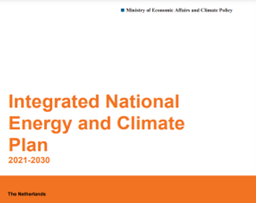Viability
Area: Design, planning and building
Traditionally the viability of renovation has been assessed through a Discounted Cash-Flow (DCF) analysis of saved energy, which is highly contingent on the discount rate (Copiello & Donati, 2021). However, these authors propose an alternative method that capitalises energy savings into housing value, thereby circumventing the limitations of discounted predicted energy savings, which are already reflected in the property value. They employ an asset-based approach to analyse renovation viability by evaluating costs and benefits in terms of value increases.The value increase of energy-efficient improvements in real estate markets usually takes the form of a green premium identified through different econometric techniques, see for example Aydin et al. (2020) for a recent study of property premiums in the Netherlands.
To increase the financial viability of renovation, the EU proposes three approaches that have been incorporated differently by Member States (Bertoldi, 2022). First, on the one hand, grants and loans rely on the reduction or complete elimination of upfront costs –“carrot” approach– to encourage renovations (see Eryzhenskiy et al., 2022, for example). Second, the “stick” side of housing renovation incentives draws on mandatory Minimum Energy Performance Standards (MEPSs), which preclude the renting or selling of properties that fall below a certain Energy performance Certificate (EPC) level (Economidou et al., 2020). Third, the European Commission also plans to expand the Emissions Trading Systems (ETS) to encompass buildings before the end of the decade (2003/87/EC). This will likely impact energy costs and increase the viability of energy-efficient renovations (Backe et al., 2023).
Fernández, A., Haffner, M. & Elsinga, M. Subsidies or green taxes? Evaluating the distributional effects of housing renovation policies among Dutch households. J Hous and the Built Environ (2024). https://doi.org/10.1007/s10901-024-10118-5
References
Aydin, E., Brounen, D., & Kok, N. (2020). The capitalization of energy efficiency: Evidence from the housing market. Journal of Urban Economics, 117, 103243. https://doi.org/10.1016/j.jue.2020.103243
Backe, S., Pinel, D., Askeland, M., Lindberg, K. B., Korpås, M., & Tomasgard, A. (2023). Exploring the link between the EU emissions trading system and net-zero emission neighbourhoods. Energy and Buildings, 281, 112731. https://doi.org/10.1016/j.enbuild.2022.112731
Bertoldi, P. (2022). Policies for energy conservation and sufficiency: Review of existing policies and recommendations for new and effective policies in OECD countries. Energy and Buildings, 264, 112075. https://doi.org/10.1016/j.enbuild.2022.112075
Copiello, S., & Donati, E. (2021). Is investing in energy efficiency worth it? Evidence for substantial price premiums but limited profitability in the housing sector. Energy and Buildings, 251, 111371. https://doi.org/10.1016/j.enbuild.2021.111371
Economidou, M., Todeschi, V., Bertoldi, P., D’Agostino, D., Zangheri, P., & Castellazzi, L. (2020). Review of 50 years of EU energy efficiency policies for buildings. Energy and Buildings, 225, 110322. https://doi.org/10.1016/j.enbuild.2020.110322
Eryzhenskiy, I., Giraudet, L.-G., Segú, M., & Dastgerdi, M. (2022). Zero-Interest Green Loans and Home Energy Retrofits: Evidence from France. https://cnrs.hal.science/hal-03585110/
Created on 14-10-2024 | Update on 23-10-2024
Related definitions
Affordability
Area: Policy and financing
Created on 21-04-2023 | Update on 23-10-2024
Read more ->Related cases

Housing retrofit subsidies in the Netherlands
Created on 20-11-2024
M.Elsinga. Supervisor, M.Haffner. Supervisor, A.Fernandez. ESR12

